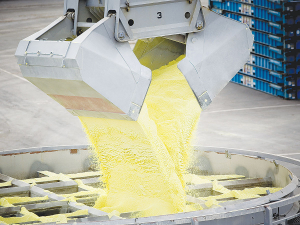Rabobank 2026 Outlook: Geopolitics shapes global agriculture
The global agricultural landscape has entered a new phase where geopolitics – not only traditional market forces – will dictate agricultural trade flows, prices, and production decisions.
 Global fertiliser prices are expected to settle in 2024, despite uncertainty posed by the Israel-Hamas conflict.
Global fertiliser prices are expected to settle in 2024, despite uncertainty posed by the Israel-Hamas conflict.
After extreme market volatility and record-high prices in recent years, global fertiliser prices are expected to settle in 2024, despite uncertainty posed by the Israel-Hamas conflict as it currently stands.
That’s according to agri-banking specialist Rabobank’s just-released Semi Annual Fertiliser Outlook, titled What is Next? In it, Rabobank says while escalating tensions in the Middle East create some uncertainty in the outlook for fertiliser markets, the current impact for the food and agri sectors is manageable.
Report co-author, RaboResearch farm inputs analyst Vitor Pistoia says that, overall, farmers around the world may feel some negative impact due to potentially rising costs of energy and fertilisers. He adds this comes on top of slightly lower import demand and prices for grains and oilseeds due to the Israel- Hamas conflict.
However, Pistoia warns if the conflict spreads to the broader Middle East/North African (MENA) region, impacts on fertiliser supply – as well as grain, meat, and dairy demand – could be notable.
“If the conflict escalates to surrounding countries and one of these countries is Iran, and we have proper military movement from Iran versus Western countries, it can drive crude oil up to 160 USD (90.07 USD as of October 30th),” he told Rural News.
“Iran controls the Strait of Hormuz and if there is an escalation they will very likely close the strait so that can impact the surrounding countries i.e. Iraq, Saudi Arabia – that’s a large part of the oil supply.”
Israel exports 6% of the world’s potash and 8% of its phosphate fertilisers (2022 data), while the broader MENA region accounts for 30% of the world’s nitrogen fertiliser exports.
The region also accounts for more than 25% of global mixed fertiliser exports, 10% of potassic fertilisers and almost half of the phosphatic fertiliser exports. It remains to be seen how much of those trade volumes will be impacted in the coming months.
Pistoia says while 2024 is still some months away, this year has been a much calmer year for the fertiliser market and can be seen as a transition year, even with some remnants of all the market complications from 2022.
The bank’s models indicate a recovery in global fertiliser usage in 2023, up by around 3%, compared to the 7% drop in 2022, with an initial analysis suggesting an increase in global fertiliser use of close to 5% in 2024.
Pistoia said local fertiliser prices were significantly lower than a year ago, but this would not necessarily lead to increased fertiliser usage across New Zealand farms over coming months.
“Farm margins are incredibly tight across the majority of New Zealand farming businesses due to lower commodity prices and ongoing elevated costs for other farm inputs – like fuel and feed – as well as higher interest costs,” he adds.
“And a key question is how much the recent drop in the New Zealand dollar will offset the reduced cost of fertiliser in farmers’ budgets. When this lower dollar is combined with the recent crude oil hikes, how much is left in those budgets to increase fertiliser application rates?”
The National Wild Goat Hunting Competition has removed 33,418 wild goats over the past three years.
New Zealand needs a new healthcare model to address rising rates of obesity in rural communities, with the current system leaving many patients unable to access effective treatment or long-term support, warn GPs.
Southland farmers are being urged to put safety first, following a spike in tip offs about risky handling of wind-damaged trees
Third-generation Ashburton dairy farmers TJ and Mark Stewart are no strangers to adapting and evolving.
When American retail giant Cosco came to audit Open Country Dairy’s new butter plant at the Waharoa site and give the green light to supply their American stores, they allowed themselves a week for the exercise.
Fonterra chair Peter McBride says the divestment of Mainland Group is their last significant asset sale and signals the end of structural changes.

OPINION: Your old mate welcomes the proposed changes to local government but notes it drew responses that ranged from the reasonable…
OPINION: A press release from the oxygen thieves running the hot air symposium on climate change, known as COP30, grabbed your…